
Here's a surprising fact: users spend an average of 2.5 hours daily on social media apps. This makes these apps one of the most profitable digital investments today.
The cost to develop a social media app varies substantially. You'll need between $40,000 to $300,000 based on your features, platform choices, and complexity. Many founders find these calculations overwhelming, especially as technology requirements and market needs keep evolving.
This complete guide breaks down every cost component of social media app development for 2024. We'll walk you through everything from original planning and MVP development to technology stack selection and feature implementation. You'll understand exactly where your money goes. Our practical strategies will help you optimize your budget while meeting market expectations.
This piece will give you a clear picture of the investment needed to bring your vision to life. It's perfect for startup founders or 5-year-old businesses that want to enter the social media space.
Strategic Planning and Cost Estimation
Social media app planning starts with smart cost estimation through a clear MVP (Minimum Viable Product) approach. Let's look at ways to optimize your budget without compromising on quality development.
MVP Development Strategy and Costs
Starting with an MVP is the most affordable approach to social media app development. A basic MVP typically costs between $30,000 to $80,000 and takes 3-6 months to complete. Medium-complexity apps need an investment between $80,000 to $150,000.
The MVP approach gives you these advantages:
- Quick market entry and early user feedback
- Lower original development costs
- A chance to verify core features
- Better use of resources
Feature Prioritization Framework
A well-laid-out feature prioritization framework helps optimize development costs. The MoSCoW method groups features into:
Must-have: Core functionalities needed for launch Should-have: Important but not critical features Could-have: Features you want to add later Won't-have: Features excluded from the original release
This prioritization helps focus development resources on key features and reduces original costs by 15-20%.
Timeline Effect on Budget
The development timeline affects your budget a lot. Basic social media apps need 500-700 development hours. Standard industry rates of $50-70 per hour mean:
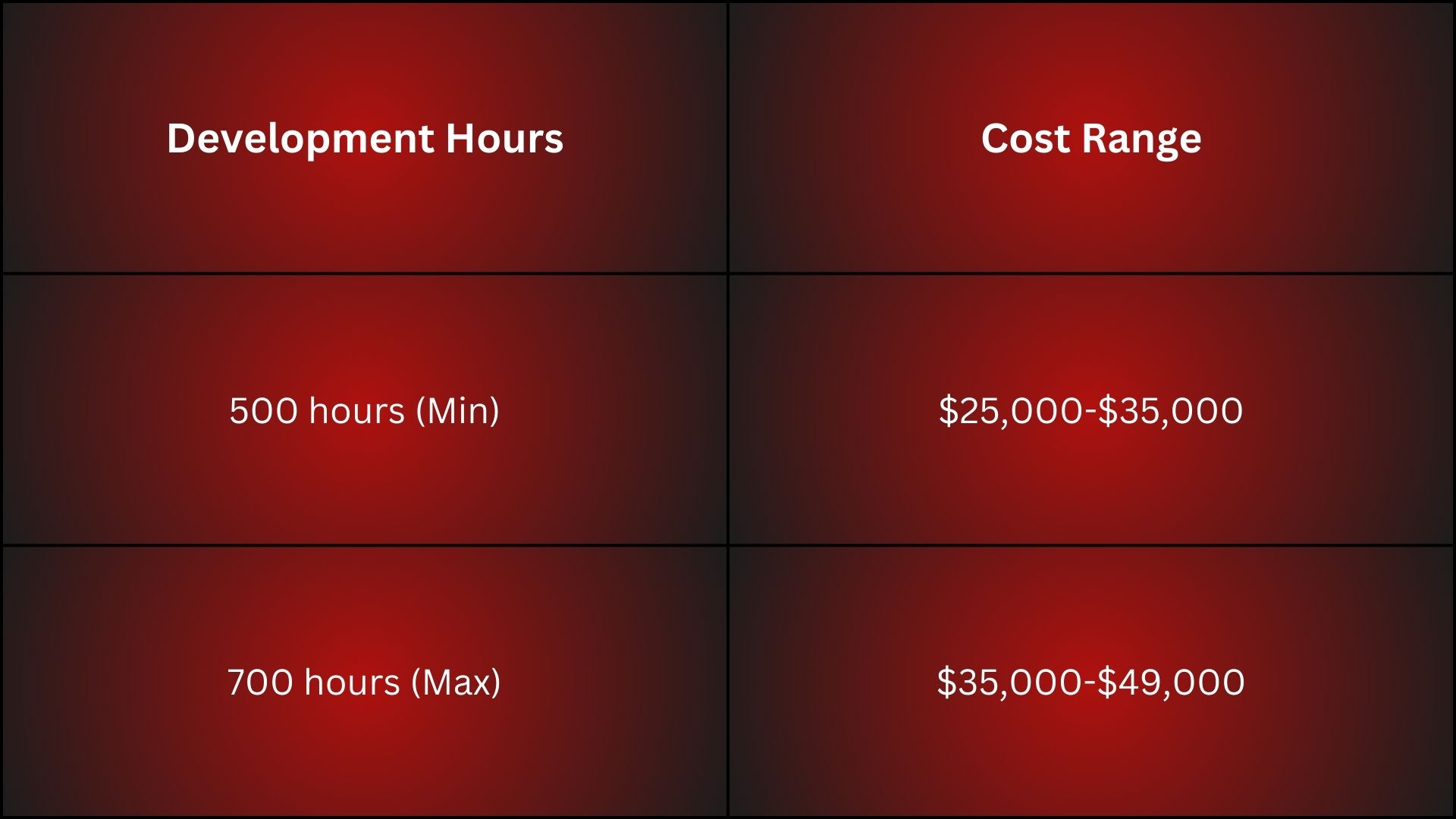
UI/UX design adds about 100 hours, costing between $5,000 to $7,000. You should set aside an extra budget for testing, which needs 70-100 hours at about $30 per hour.
Smart planning of these components and proper feature prioritization help optimize your social media app development budget. Quality and functionality remain intact throughout the process.
Technology Stack Selection and Costs
The technology stack you choose will substantially affect your social media app development costs. Here's a detailed breakdown of cost components to help you make better decisions.
Native vs Cross-platform Development Costs
Our research shows that cross-platform development reduces costs by 30-40% compared to native development. A medium-complexity social media app typically costs:
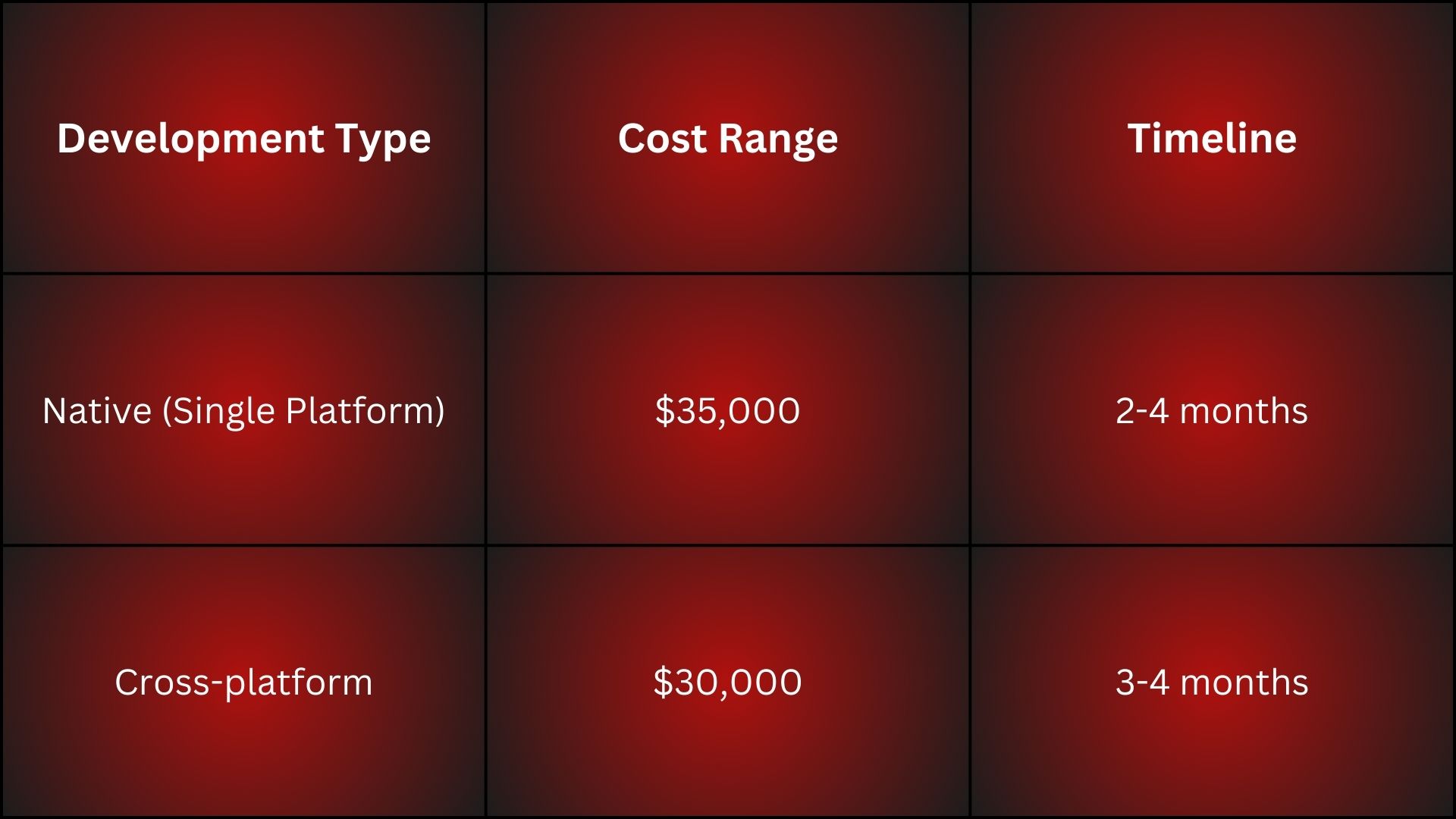
Cloud Services and Infrastructure Pricing
These major cloud providers offer excellent infrastructure solutions:
- AWS: Basic compute instances start at $0.03/hour, with storage costs around $0.02/GB for the first 50TB
- Azure: Virtual machines start at $3.37/month, with premium storage at $0.15/GB
- Google Cloud: Offers sustained use discounts up to 30%, with standard storage at $0.02/GB/month
Third-party Integration Expenses
Third-party integrations are vital yet often overlooked in the original budget planning. Here are common integration costs:
Essential Integrations:
- Payment Gateways: $5,000-$30,000 annually
- Authentication Services: $5,000-$25,000 yearly
- Analytics Tools: $2,000-$10,000 per year
Cloud infrastructure costs make up 15-20% of the total development budget. The best approach is to start with simple integrations and scale them as your user base expands.
Note that selecting the right tech stack extends beyond the original costs. While cross-platform development saves money initially, some complex features might need native development to perform optimally.
Essential vs Premium Features Pricing
Social media app development costs vary based on features and complexity. Let's break down the costs to help you plan your investment wisely.
Basic Feature Development Costs
Building simple social media app features costs between $30,000 to $50,000. These features are the foundations of any social platform:
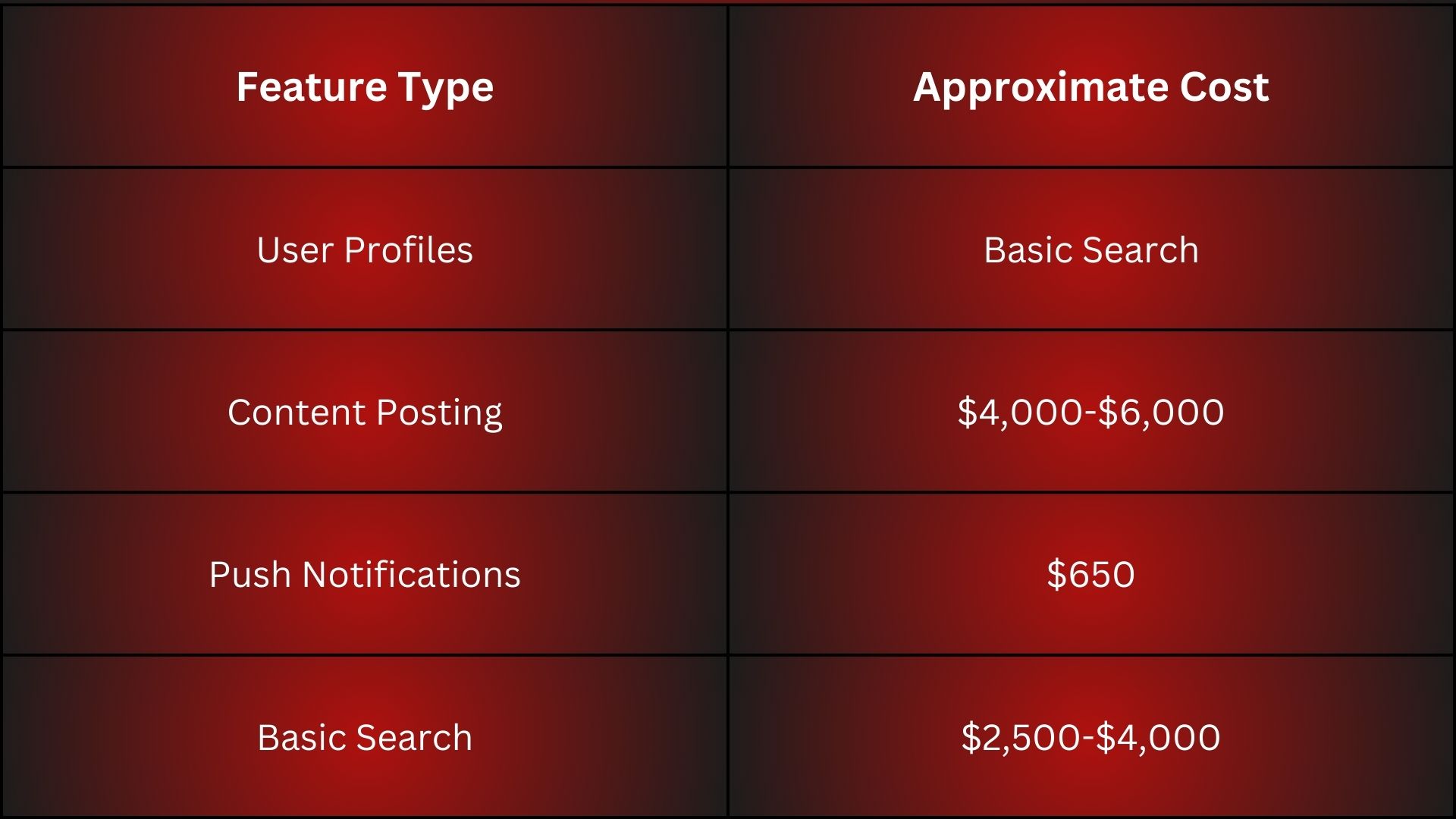
Advanced Feature Implementation Expenses
Premium features boost development costs substantially. Advanced functions need sophisticated development, especially when you have video-related features in the mix. To cite an instance, video call implementation costs start at $5,500.
Premium features that impact your budget include:
- Real-time Updates: $10,000-$30,000
- Live Streaming Capabilities: $15,000-$40,000
- Advanced Admin Controls: $8,000-$12,000
Customization and Branding Costs
UI/UX design costs typically range from $5,500 to $6,000. This investment includes:
- Custom Interface Design
- Brand Integration
- Theme Development
- User Experience Optimization
Enterprise-level applications need a bigger budget to cover additional customization features. The total cost can reach $250,000 with complete branding elements and advanced customization options.
Simple features are the foundations of your app. Strategic investments in premium features can boost user participation and retention rates effectively. Start with essential features first. Add advanced functionality gradually based on user feedback and your platform's growth.
Also Read: Mobile Application Development Cost Breakdown in 2025
Monetization and ROI Considerations
Social media app development's financial success depends on smart monetization strategies. We analyzed several revenue strategies and their costs to help you plan your investment better.
Revenue Model Implementation Costs
Different revenue models need varying levels of investment. Mobile app revenue hit $581.90 billion in 2020 and will reach $613.00 billion by 2025. Here's what different revenue models typically cost:
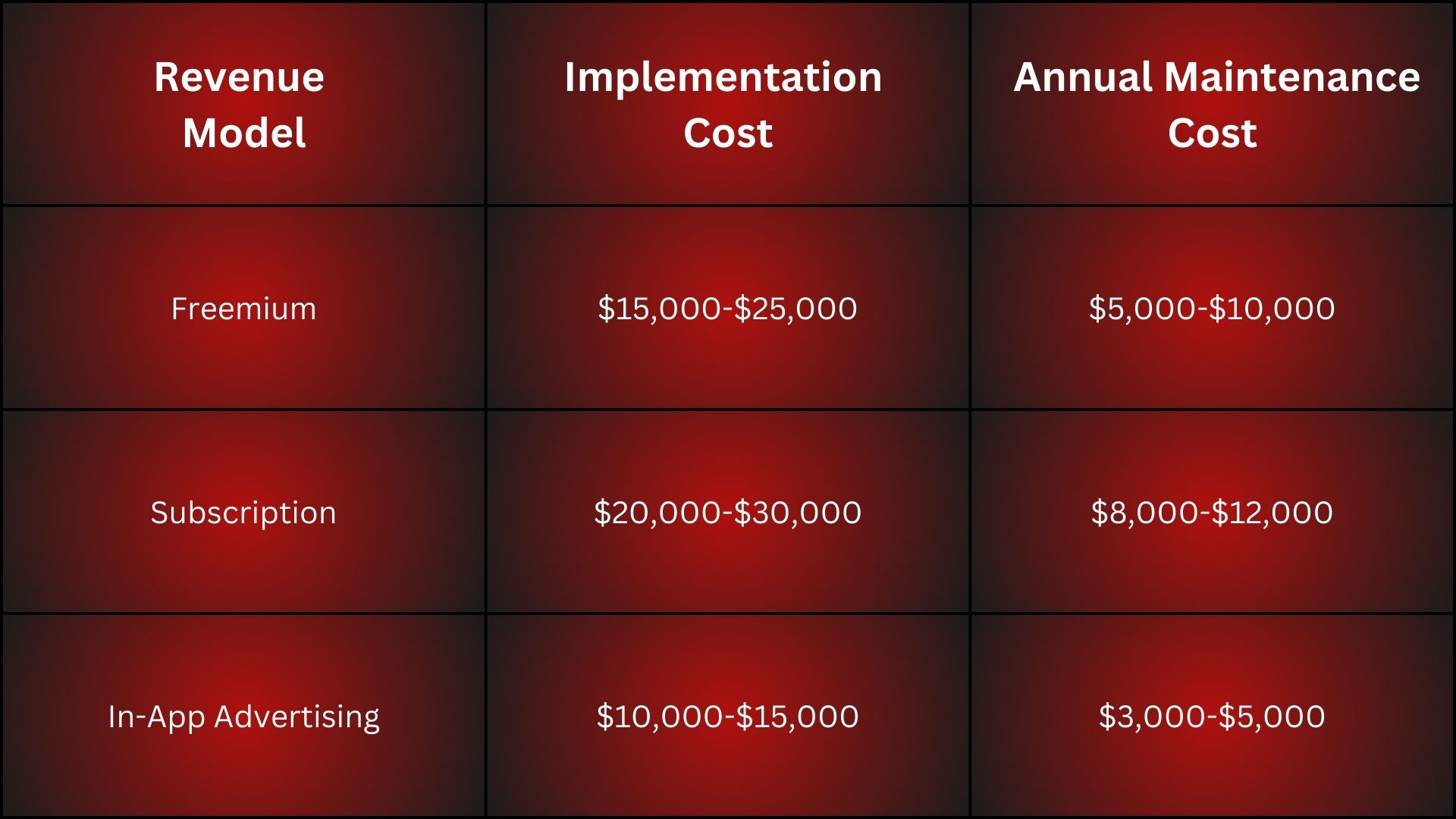
Marketing and User Acquisition Expenses
Customer acquisition costs jumped 60% over the last several years. Each marketing channel shows distinct cost patterns:
- Social Media Advertising: $3.50-$3.75 per install
- Search Ads: $1.42 (Apple) to $2.65 (Google) per install
- Influencer Marketing: Gets $6.50 for every dollar spent
Analytics and Growth Tools Integration
Your app needs reliable analytics tools to track performance. Analytics and behavior tracking tools cost between $500 and $2,000 monthly. These integration costs include:
- Simple Analytics Suite: $25-$1,500 monthly
- User Engagement Tools: $1,000-$5,000 monthly
- Personalization Features: $2,000-$10,000 monthly
ROI tracking works best with detailed analytics from the start. Users abandon apps within the first day 70% of the time, so early user engagement tracking and optimization matter. Retargeting investments can boost conversion rates 70% higher than regular display ads.
These costs drive sustainable growth. Apps that use proper analytics integration and marketing strategies show better user retention and monetization rates.
Cost Optimization Strategies
Our team has helped many businesses develop social media apps, and we've learned what works to cut costs while delivering quality. Here's how we can make your development budget work smarter, not harder.
Development Process Optimization
Agile methodology reduces development costs by up to 55% compared to traditional approaches. Our optimization framework has these key elements:
- Sprint-based development cycles
- Regular code reviews to catch issues early
- Automated testing protocols
- Continuous integration practices
Open-source technologies help us cut development expenses by up to 30%. This works really well with social media apps because components can be reused easily.
Resource Allocation Efficiency
We created a strategic resource matrix that balances team utilization effectively:
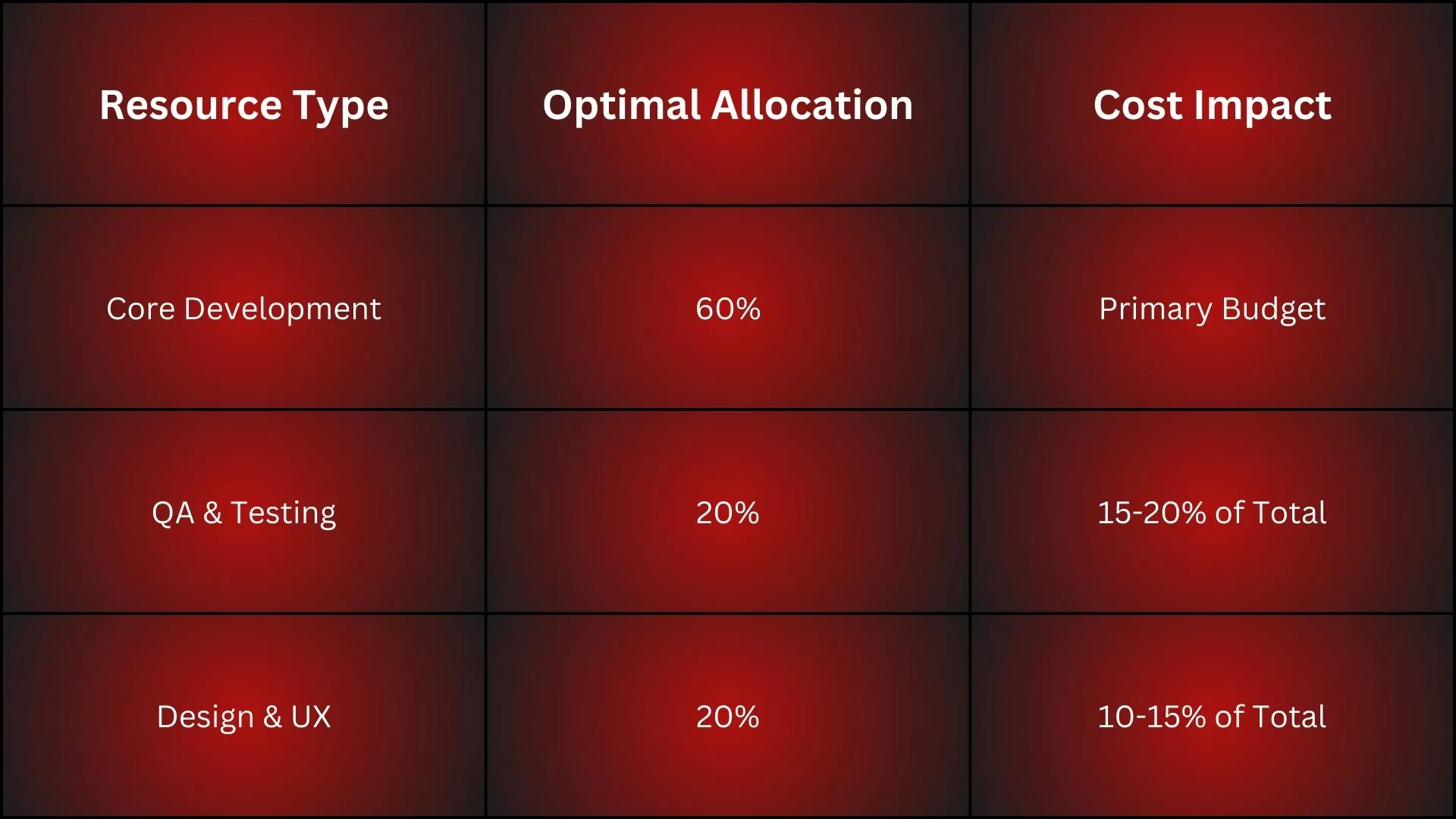
Our experience shows that outsourcing non-core activities cuts overhead costs by a lot. This lets us access specialized expertise while keeping quality high.
Long-term Cost Management Techniques
These proven strategies help manage costs economically:
- Cloud Infrastructure Optimization
- Pay-as-you-go models
- Resource scaling based on demand
- Regular performance monitoring
- Maintenance Planning
- 15-20% of original development cost goes to yearly maintenance
- Regular updates and security patches
- Performance optimization cycles
Detailed documentation and agile principles help us cut long-term maintenance costs by 30%. Resource leveling prevents both overuse and underuse of resources, which keeps costs optimal.
Startups and established companies should focus on effective sprint planning and track resource allocation regularly. This helps our clients control their budgets better while getting high-quality results.
Conclusion
Building a social media app requires a most important investment that needs careful planning and smart decisions. Our detailed analysis shows that costs typically range from $40,000 to $300,000. Several factors affect the final budget.
Here's everything in social media app development you should think over:
- Smart MVP development and feature priorities
- Tech stack choices and reliable costs
- Core and premium feature builds
- Ways to make money and ROI plans
- Affordable methods and resource planning
Our research shows that successful apps balance cost with quality delivery. A well-planned MVP, the right technology, and smart cost-saving steps create green practices in development.
Smart budget choices at the start lead to better results. Your maintenance costs drop over time. Companies that use these guidelines see better resource use. Their social media apps reach the market faster.
Social media app development keeps changing, but smart planning, cost management and investing in a professional mobile app development company are vital to success. These insights will help you make smart choices as you start a journey in app development while keeping your budget in check.





